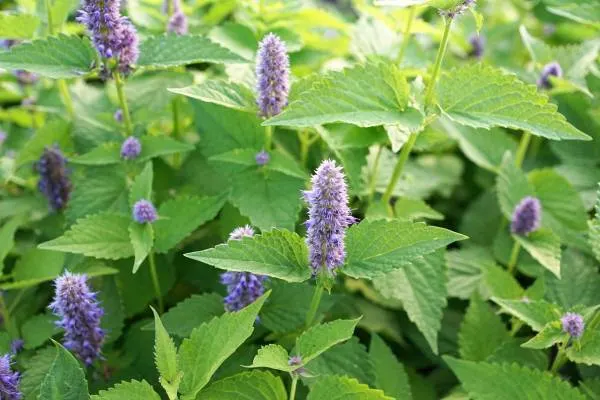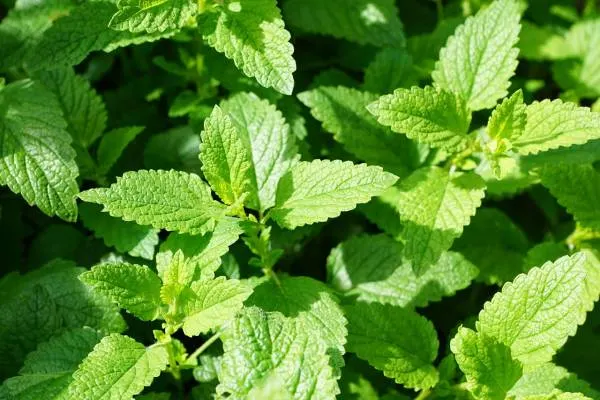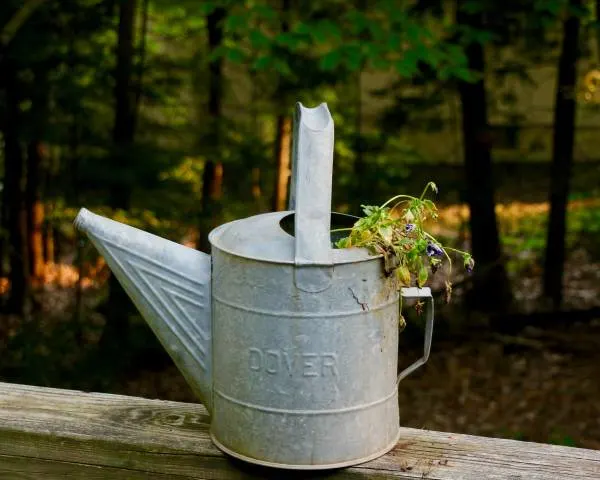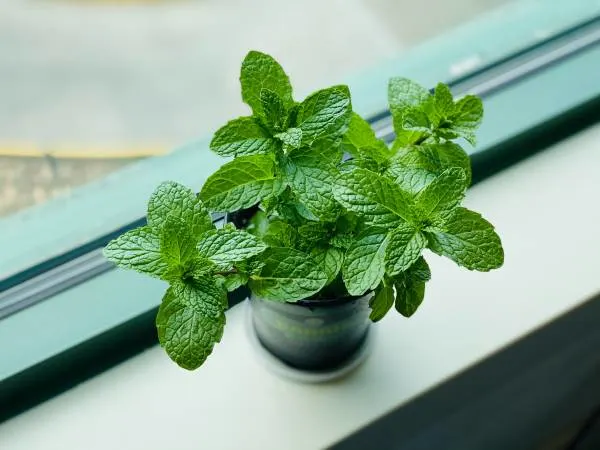Mint, the aromatic herb you love for its refreshing flavor in teas, salads, and many dishes, occasionally surprises us by flowering.
Have you ever caught your mint plant blooming and wondered why it is flowering?
Today, we explore the curious world of mint and its occasional—but surprising—floral display.
Sneak Peek: Flowering in a mint plant isn’t a red alert; in fact, it’s a sign that your mint is thriving. However, if you prefer leafy goodness over blossoms, we’ve got your back!
Therefore, whether you’re cultivating a minty-green sanctuary or admiring the unexpected mint flowers, join us in unraveling the captivating mystery of why your mint is putting on its flowery attire.
Let us delve into the delightful world of flowering mints!

Why Is My Mint Plant Flowering?
The emergence of mint flowers is a normal yet significant stage, signaling the plant’s maturity and potential for seed production.
Understanding the life cycle and the purpose of mint flowering sheds light on its natural growth processes.
Let’s discuss this fascinating process further.
The Life Cycle of Mint Plant
Let’s dive into the fascinating world of mint plants and their lifecycle.
It is a dynamic process that unfolds over multiple stages, showcasing how tough and adaptable mint can be.
1. Germination
So, it all kicks off with the germination of mint seeds, usually in the spring or early summer.
Just remember, these little seeds like it warm to sprout happily.
2. Vegetation
As these seeds sprout, they become tiny seedlings and then reach the vegetative stage.
This is where the plant is all about growing fresh mint leaves and building a strong root system. It’s kind of like the foundation phase for the plant’s structure and overall health.
3. Flowering
After a few weeks of this growing spree, our mint plants hit maturity and shift gears into the reproductive stage.
That’s when you see those pretty mint flowers popping up – they come in all sorts of colors like white, pink, or lavender.

The Significance of Flowering in Mint
The significance of mint flowering goes beyond its aesthetic appeal.
Now, these mint flowers aren’t just there to look pretty. They’re crucial for the plant’s lifecycle because they attract pollinators like bees and butterflies. This helps with cross-pollination, forming those seeds in the plant’s pods.
Going from the vegetative stage to the flowering process is a big deal for our mint buddies.
It’s like they’re saying, “Okay, enough growing, time to make some seeds!” But here’s the cool part for us gardeners – managing this flowering stage can optimize our harvest.
So, if you want to keep that mint plant in check, regular pruning and harvesting of leaves are your friends. It’s all about finding that sweet spot where the plant puts energy into both making leaves for us and seeds for the next generation.
Understanding why flowering matters for our mint pals helps us make savvy decisions for our gardens, ensuring a healthy and productive crop.
Causes of Early or Excessive Flowering in Mint Plants
Typically, mint plant flowers due to high temperatures and lack of water, but there are other reasons as well.
Let’s discuss some other reasons for mint flowering.
1. Environmental Factors
Environmental factors play a crucial role in influencing the growth and development of plants, including their flowering process.
Here’s an explanation of how light conditions, temperature fluctuations, and humidity levels can contribute to early and excessive flowering in mint plants:
Light Conditions: Responding to photoperiodism, mint plants flower based on light exposure. Extended or inconsistent light triggers early and excessive mint flowering. Maintaining optimal day length regulates flowering patterns and promotes healthy plant development in mint.
Temperature Fluctuations: Temperature shifts, especially extremes, can stress mint plants, accelerating flowering. Sudden changes disrupt normal development, prompting early flowering as a survival strategy. Ideal, stable temperatures are essential for mitigating stress and ensuring balanced plant growth.
Humidity Levels: Humidity influences water balance in mint plants, impacting physiological processes. High humidity simulates optimal growth conditions, while low moisture induces stress responses, leading to early and excessive flowering as a reproductive survival mechanism.
Managing proper environmental conditions is crucial for maintaining plant health and regulating flowering.

2. Nutrient Imbalance
Like many other plants, mint plants require a balance of essential nutrients to thrive. When there’s an imbalance in these nutrients, it can lead to different physiological responses, potentially affecting the plant’s ability to flower.
Here’s how nutrient imbalance may contribute to flowering issues in mint plants:
Nitrogen Deficiency: A lack of nitrogen in the soil can trigger early and excessive mint flowering. Nitrogen is crucial for vegetative growth, and its scarcity leads the plant to divert resources to reproductive structures prematurely, resulting in premature flowering. This can compromise overall plant health and yield.
Phosphorus and Potassium Imbalance: An imbalance in phosphorus and potassium levels can also induce early flowering. While phosphorus promotes mint flower development, an excess of potassium can disrupt nutrient uptake, potentially accelerating the transition to the reproductive phase in mint plants.
Achieving a proper nutrient balance is essential for optimal growth in mint plants.
3. Watering Practices
Mint plants have specific water requirements that, when met, promote healthy growth and flowering.
Here are the two ways in which water practices can contribute to the growth of mint flowers:
Overwatering: Providing excessive water to mint plants can lead to overwatering, where the soil remains consistently waterlogged. This condition may reduce oxygen availability to the roots, promoting root rot and hindering nutrient uptake. Overwatering can stress the mint plant, negatively impacting its overall health, and may lead to a decline in flower production. It’s essential to avoid prolonged periods of waterlogged soil to prevent these detrimental effects.
Underwatering: Conversely, underwatering can also trigger the early flowering of mint plants. Underwatering occurs when mint plants do not receive sufficient moisture. Inadequate water supply can lead to dry and stressed plants, affecting their ability to grow and produce flowers. Insufficient water may result in wilting, reduced nutrient absorption, and a decline in overall plant vigor. Underwatered mint plants are more prone to early flowering, which can impact the quality and quantity of mint flowers.
Maintaining a consistent and appropriate watering schedule is crucial to prevent the negative consequences of improper watering.

Preventive Measures and Remedial Actions for Flowering In Mint Plants
Let us now learn how to prevent flowering in mint plants.
Prevention of Flowering in Mint Plants:
Mint is a robust and fast-growing herb, and a combination of these techniques can be more effective.
Regular monitoring and intervention will help keep your mint plants in the vegetative stage, ensuring a continuous harvest of fresh mint leaves.
1. Pruning Techniques:
Regular Harvesting: It would be best to harvest mint leaves regularly to ensure the plant focuses on the growth of leaves rather than flowers.
Remove Flower Buds: Make sure to pinch off the buds at the stem to prevent the plant from allocating energy towards flowering. Removing the developing flower buds prevents the plant from reaching the flowering stage.
Pruning Timing: Prune the plants during the early stages of growth to encourage lateral branching and discourage vertical growth leading to flowering. This is usually in spring or early summer for mint.
Also, remember to prune the plant after harvesting mint leaves and avoid heavy pruning close to the fall or winter months, as this may leave the plant more vulnerable to cold temperatures.
2. Environmental Controls:
Remember that different mint varieties may have slightly different preferences, so it’s essential to observe your specific type of mint and adjust environmental controls accordingly.
Additionally, mint plants may respond differently to various environmental conditions, so some experimentation may be needed to find the optimal settings for your mint.
To prevent flowering, you can implement the following environmental controls:
Photoperiod Control: Mint plants typically require long days and short nights to remain vegetative. To prevent flowering, maintain a minimum of 14–16 hours of light per day. You can achieve this by supplementing natural sunlight with artificial lighting during short days.
Blackout Curtains or Covers: During the night period, ensure complete darkness. Covering plants with blackout curtains or using light-proof covers can help maintain the desired photoperiod.
Temperature Control: Mint plants prefer cooler temperatures and may start flowering in response to warmer conditions. Maintain temperatures between 60–75°F (15–24°C) during the day and slightly cooler at night.
Mint plants are often sensitive to seasonal changes.
In warmer climates, mint may flower earlier, so monitoring and adjusting temperature controls become even more critical.

Remedial Actions for Flowering Mint Plants:
1. Aggressive Pruning Strategies:
Canopy Thinning: Canopy thinning involves selectively removing some of the foliage from the upper portion of the plant. This helps improve air circulation, reduce disease risk, and encourage new growth.
Procedure:
Identify the crowded or overgrown areas of the mint plant.
Use clean and sharp pruning shears to cut back excess stems and leaves. Focus on removing older or damaged growth.
Make cuts just above a set of mint leaves or nodes to encourage branching and new growth.
Removal of Flower Stems: Removing flower stems is essential for certain herbs like mint because allowing them to flower can compromise the quality and flavor of the mint leaves. The energy that goes into flower production can be redirected to leaf production, resulting in a more robust and flavorful mint plant.
Procedure:
Inspect the mint plant for flowering stems. These are typically tall and may have buds or flowers.
Use pruning shears to carefully cut the flower stems just above a set of mint leaves or nodes. Be sure to cut at a slight angle to prevent water from collecting on the cut surface.
Repeat this process regularly, especially during the growing season, to prevent the plant from seeding.
2. Nutrient Adjustment:
Nitrogen Boost:
Apply compost or aged manure.
Use organic fertilizers like fish emulsion.
Foliar spray with diluted liquid seaweed extract.
Plant nitrogen-fixing cover crops.
Phosphorus Adjustments:
Incorporate bone meal or rock phosphate.
Choose a balanced fertilizer with higher phosphorus.
Introduce mycorrhizal fungi for phosphorus absorption.
General Tips:
Ensure consistent watering.
Apply organic mulch.
Check and adjust soil pH.
That’s all.
Let’s conclude the talk here.
Conclusion!
As we discussed, the flowering phase is a normal and significant part of the mint life cycle, showcasing its maturity and potential for seed production.
From germination to reproduction, the dynamic journey of the mint unfolds through various stages, each contributing to its resilience and adaptability. Those mint flowers aren’t just there to look pretty; they’re essential players in attracting pollinators and ensuring a healthy harvest.
That’s all for today on the fascinating world of flowering mints!
After reading the whole article, I hope you’ve got answers to your questions.
So, whether you’re a green-thumbed maestro or just enjoying the surprise floral display of your minty friends, here’s to embracing the quirks and vibrancy of this aromatic herb! 🥂
